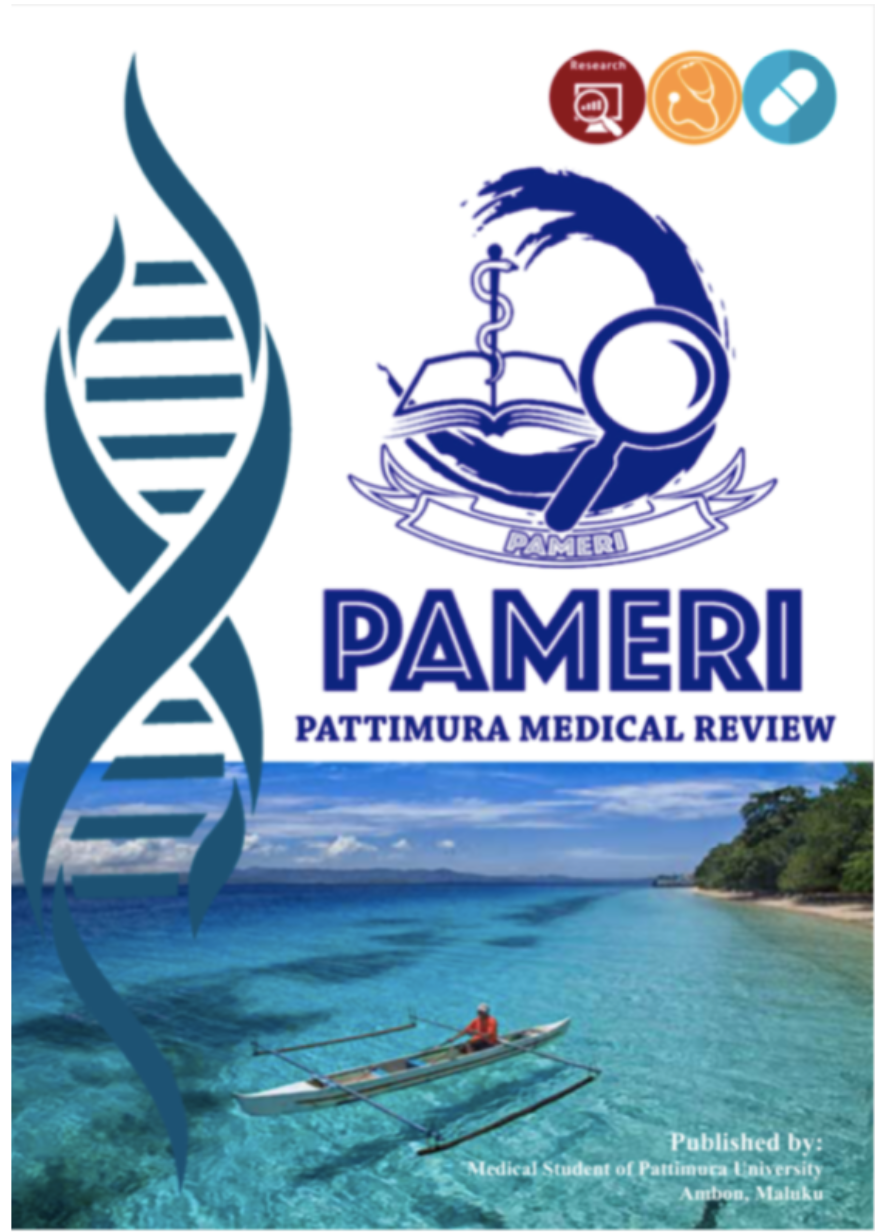DIAGNOSIS DAN TATALAKSANA EFUSI PARAPNEUMONIA
Abstract
Parapneumonic effusion is a pleural effusion associated with bacterial pneumonia, lung abscess or bronchiectasis. The effusion of parapneumonic arising from inflammation in the lung and pleura is due to a direct invasion of bacteria, cascade of inflammatory reactions, and bacterial virulence. The development of the effusion of parapneumonic is grouped into 3 stages: 1) exudative stage, 2) fibrinopurulent stage, 3) organizing stage with pleural peel form. This stage helps categorize effusions into groups to evaluate the risk of cases requiring intervention. Proper management and antibiotic therapy will result in improvements to the effusions of parapneumonic
Downloads
References
Light RW. Parapneumonic effusions and empyema. Proc Am Thorac Soc. 2006;3:75−80.
Kaysin A, Viera AJ. Community-acquired pneumonia in adults: diagnosis and management. Am Fam Physician. 2016;94:698−706.
Riset Kesehatan Dasar. Badan Penelitian dan Pengembangan Kesehatan Kementerian Kesehatan RI. 2013. Available from: http://www.depkes.go.id
Fachrucha F, Isbaniah F, Soepandi PZ. Angka kepatuhan dokter terhadap penggunaan antibiotik berdasarkan pedoman penatalaksanaan pneumonia perhimpunan dokter paru Indonesia (PDPI) pada pasien pneumonia komunitas yang dirawat inap di RSUP Persahabatan. Tesis Departemen Pulmonologi dan Ilmu Kedokteran Respirasi FKUI. Jakarta; 2017.
Halm EA, Teirstein AS. Management of community-acquired pneumonia. N Engl J Med. 2002;347:2039−45.
Menendez R, Torres A, Zalacain R, Villascalaras JJM, Borderias L, Moya MB et al. Risk factors of treatment failure in community acquired pneumonia: implications for disease outcome. Thorax. 2004;59:960−65.
McCauley L, Dean N. Pneumonia and empyema: causal, casual or unknown. J Thorac Dis. 2015;7:992−8.
Light RW. Parapneumonic effusions and empyema. In: Light RW, editor. Pleural diseases. 6th ed. Philadelphia: Lippincot Williams & Wilkin; 2013. p.209−40.
Shan SA. Diagnosis and management of parapneumonic effusions and empyema. Clin Infect Dis. 2007;45:1480–6.
Chapman SJ, Davies RJO. Recent advances in parapneumonic effusion and empyema. Curr Opin Pulm Med. 2004;10:299–304.
Chan KP, Fitzgerald DB, Lee YCG. Emerging concepts in pleural infection. Curr Opin Pulm Med. 2018;24:367−73.
English JC, Leslie KO. Pathology of the pleura. Clin Chest Med. 2006;27:157−80.
Wang NS. Anatomy of the pleura. Clin Chest Med. 1998;19:229−40.
Broaddus CV, Light RW. Pleural effusion. In: Broaddus CV, Light RW, editors. Murray and Nadel’s Textbook of Respiratory medicine. 6th ed. Philadelphia: Elsevier saunders; 2016. p.1396−424.
Antony VB. Immunological mechanisms in pleural disease. Eur Resp J. 2003;21:539–44.
Maskell NA, Batt S, Hedley EL, Davies CW, Gillespie SH, Davies RJ. The bacteriology of pleural infection by genetic and standard methods and its mortality significance. Am J Respir Crit Care Med. 2006;174(7):817−23.
Davies HE, Davies RJ, Davies CWH. Management of pleural infection in adults: British Thoracic Society pleural disease guideline 2010. Thorax. 2010;65:41−53.
Izhakian S, Wasser WG, Fox BD, Vainshelboim B, Kramer MR. The diagnostic value of the pleural fluid c reactive protein in parapneumonic effusions. Dis Markers. 2016;2016:1−6.
Metersky ML. Is the lateral decubitus radiograph necessary for the management of a parapneumonic pleural effusion?. Chest. 2003;124:1129–32.
Brixey AG, Luo Y, Skouras V, Awdankiewicz A, Light RW. The efficacy of chest radiographs to detect parapneumonic effusions. Respirology. 2011;16:1000−4.
Varsamas C, Kalkanis A, Gourgoulianis KI. CT versus thoracic ultrasound for discriminating uncomplicated and complicated parapneumonic pleural effusions. Respirology. 2018;23:232.
Kearney SE, Davies CWH, Davies RJO, Gleeson FV. Computed tomography and ultrasound in parapneumonic effusions and empyema. Clin Radiol. 2002;55:542−7.
Kraus GJ. The split pleura sign. Radiology. 2007;243:297–8.
Skouras V, Awdankiewicz A, Light RW. What size parapneumonic effusion should be sampled?. Thorax. 2010;65:91.
Garido VV, Viedma EC, Villar AF, Gafas AP, Rodriguez EP, Pérez JMP et al. Recommendations of diagnosis and treatment of pleural effusion update. Arch Bronconeumol. 2014;50:235−49.
Mandell LA, Wunderick RG, Anzueto A, Bartlett JG, Campbell GD, Dean NC et al. Infectious diseases society of America/American thoracic society consensus guidelines on the management of community acquired pneumonia in adults. Clin Infect Dis. 2007;44:27−72.
Kalil AC, Metersky ML, Klompas M, Muscedere J, Sweeney DA, Palmer LB et al. Infectious diseases society of America/American thoracic society consensus guidelines on the management of adults with hospital acquired and ventilator associated pneumonia. Clin Infect Dis. 2016;63:61−111.
Breen DP, Daneshvar C. Role of interventional pulmonology in the management of complicated parapneumonic pleural effusion and empyema. Respirology. 2014;19:970−8
Copyright (c) 2022 PAMERI: Pattimura Medical Review

This work is licensed under a Creative Commons Attribution-NonCommercial-ShareAlike 4.0 International License.










